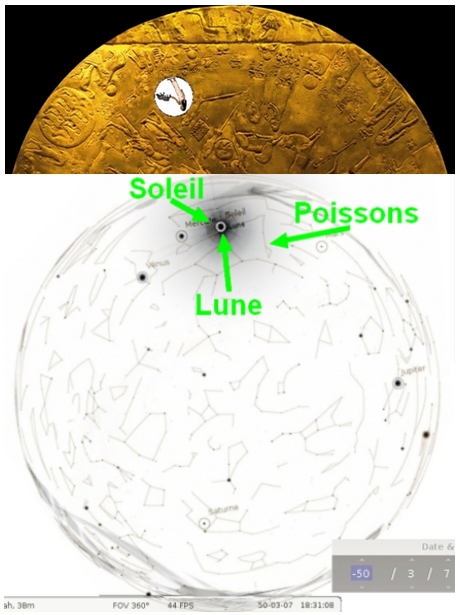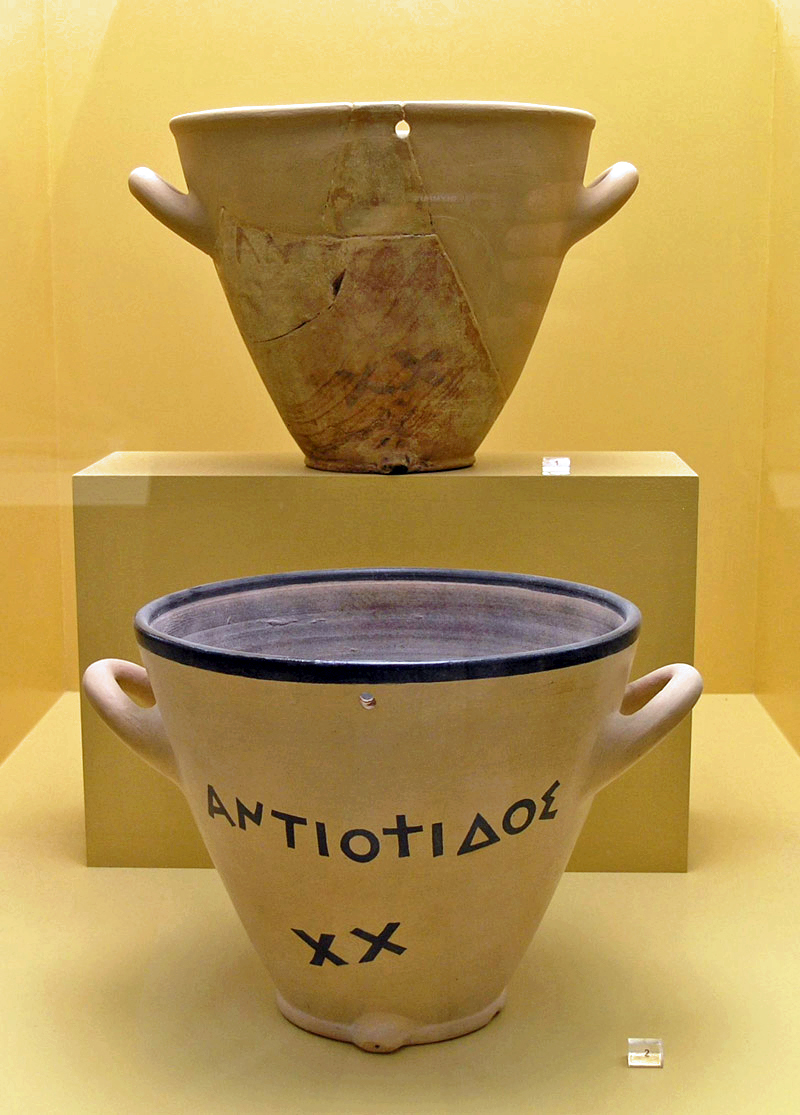|
Astronomical Ceiling Of Senemut Tomb
Astronomical ceiling decoration in its earliest form can be traced to the tomb of Senenmut (Theban tomb no. 353), located at the site of Deir el-Bahri, discovered in Thebes, Upper Egypt. The tomb and the ceiling decorations date back to the XVIII Dynasty of ancient Egypt (circa 1479–1458 BCE). It is closed to the public. Discovery The tomb of Senemut was discovered during the 1925–1927 excavations directed by Herbert Winlock for the Egyptian Expedition of the Metropolitan Museum of Art. The unfinished tomb is entered via a steep descending stairway starting in a quarry. This is 90m long and gives access to three successive chambers under the Mortuary Temple of Hatshepsut. Whether this was done to deliberately place his tomb in the precincts of Hatshepsut's temple or to reach better quality sandstone is not known. The unearthing of the 10x12 ft. chamber known as Chamber A yielded the two panels of what is now referred to as the Egyptian Celestial Diagram. The ceiling ... [...More Info...] [...Related Items...] OR: [Wikipedia] [Google] [Baidu] |
Astronomical Ceiling, Tomb Of Senenmut MET DT207429
Astronomy is a natural science that studies astronomical object, celestial objects and the phenomena that occur in the cosmos. It uses mathematics, physics, and chemistry in order to explain their origin and their overall chronology of the Universe, evolution. Objects of interest include planets, natural satellite, moons, stars, nebulae, galaxy, galaxies, meteoroids, asteroids, and comets. Relevant phenomena include supernova explosions, gamma ray bursts, quasars, blazars, pulsars, and cosmic microwave background radiation. More generally, astronomy studies everything that originates beyond atmosphere of Earth, Earth's atmosphere. Cosmology is a branch of astronomy that studies the universe as a whole. Astronomy is one of the oldest natural sciences. The early civilizations in recorded history made methodical observations of the night sky. These include the Egyptian astronomy, Egyptians, Babylonian astronomy, Babylonians, Greek astronomy, Greeks, Indian astronomy, Indians, Ch ... [...More Info...] [...Related Items...] OR: [Wikipedia] [Google] [Baidu] |
Ursa Major
Ursa Major, also known as the Great Bear, is a constellation in the Northern Sky, whose associated mythology likely dates back into prehistory. Its Latin name means "greater (or larger) bear", referring to and contrasting it with nearby Ursa Minor, the lesser bear. In antiquity, it was one of the original 48 constellations listed by Ptolemy in the 2nd century AD, drawing on earlier works by Greek, Egyptian, Babylonian, and Assyrian astronomers. Today it is the third largest of the 88 modern constellations. Ursa Major is primarily known from the asterism of its main seven stars, which has been called the "Big Dipper", "the Wagon", "Charles's Wain", or "the Plough", among other names. In particular, the Big Dipper's stellar configuration mimics the shape of the " Little Dipper". Two of its stars, named Dubhe and Merak ( α Ursae Majoris and β Ursae Majoris), can be used as the navigational pointer towards the place of the current northern pole star, Polaris in Ursa Mino ... [...More Info...] [...Related Items...] OR: [Wikipedia] [Google] [Baidu] |
Dendera Zodiac
The sculptured Dendera zodiac (or Denderah zodiac) is a widely known Art of ancient Egypt, Egyptian bas-relief from the ceiling of the ''pronaos'' (or portico) of a chapel dedicated to Osiris in the Dendera Temple complex, Hathor temple at Dendera, containing images of Taurus (astrology), Taurus (the Bull (mythology), bull) and Libra (astrology), Libra (the scales). This chapel was begun in the late History of Ptolemaic Egypt, Ptolemaic period; its ''pronaos'' was added by the emperor Tiberius. This led Jean-François Champollion to date the relief to the Hellenistic civilization, Greco-History of Roman Egypt, Roman period, but most of his contemporaries believed it to be of the New Kingdom of Egypt, New Kingdom. The relief, which John H. Rogers characterised as "the only complete map that we have of an ancient sky", has been conjectured in the past to represent the basis on which later astronomy systems were based. It is now on display at the Musée du Louvre, Paris. Descripti ... [...More Info...] [...Related Items...] OR: [Wikipedia] [Google] [Baidu] |
Babylonians
Babylonia (; , ) was an ancient Akkadian-speaking state and cultural area based in the city of Babylon in central-southern Mesopotamia (present-day Iraq and parts of Kuwait, Syria and Iran). It emerged as an Akkadian-populated but Amorite-ruled state . During the reign of Hammurabi and afterwards, Babylonia was retrospectively called "the country of Akkad" ( in Akkadian), a deliberate archaism in reference to the previous glory of the Akkadian Empire. It was often involved in rivalry with the older ethno-linguistically related state of Assyria in the north of Mesopotamia and Elam to the east in Ancient Iran. Babylonia briefly became the major power in the region after Hammurabi (fl. –1752 BC middle chronology, or –1654 BC, short chronology) created a short-lived empire, succeeding the earlier Akkadian Empire, Third Dynasty of Ur, and Old Assyrian Empire. The Babylonian Empire rapidly fell apart after the death of Hammurabi and reverted to a small kingdom centered around t ... [...More Info...] [...Related Items...] OR: [Wikipedia] [Google] [Baidu] |
Sumer
Sumer () is the earliest known civilization, located in the historical region of southern Mesopotamia (now south-central Iraq), emerging during the Chalcolithic and Early Bronze Age, early Bronze Ages between the sixth and fifth millennium BC. Like nearby Elam, it is one of the Cradle of civilization, cradles of civilization, along with ancient Egypt, Egypt, the Indus Valley Civilisation, Indus Valley, the Erligang culture of the Yellow River valley, Caral-Supe civilization, Caral-Supe, and Mesoamerica. Living along the valleys of the Tigris and Euphrates rivers, Sumerian farmers grew an abundance of grain and other crops, a surplus of which enabled them to form urban settlements. The world's earliest known texts come from the Sumerian cities of Uruk and Jemdet Nasr, and date to between , following a period of proto-writing . Name The term "Sumer" () comes from the Akkadian Empire, Akkadian name for the "Sumerians", the ancient non-Semitic languages, Semitic-speaking inhabitan ... [...More Info...] [...Related Items...] OR: [Wikipedia] [Google] [Baidu] |
Egyptian Astronomy
Egyptian astronomy started in prehistory, prehistoric times, in the Prehistoric Egypt, Predynastic Period. In the 5th millennium BCE, the stone circles at Nabta Playa may have made use of astronomical alignments. By the time the historical Ancient Egypt, Dynastic Period began in the 3rd millennium BCE, the 365 day period of the Egyptian calendar was already in use, and the observation of stars was important in determining the annual flooding of the Nile. The Egyptian pyramids were carefully aligned towards the pole star, and the temple of Amun, Amun-Re at Karnak was aligned on the rising of the winter solstice, midwinter Sun. Astronomy played a considerable part in fixing the dates of religious festivals and determining the hours of night, and temple astrology, astrologers were especially adept at watching the stars and observing the conjunction (astronomy), conjunctions and risings of the Sun, Moon, and planets, as well as the lunar phases. In Ptolemaic Kingdom, Ptolemaic ... [...More Info...] [...Related Items...] OR: [Wikipedia] [Google] [Baidu] |
Water Clock
A water clock, or clepsydra (; ; ), is a timepiece by which time is measured by the regulated flow of liquid into (inflow type) or out from (outflow type) a vessel, and where the amount of liquid can then be measured. Water clocks are some of the oldest time-measuring instruments. The simplest form of water clock, with a bowl-shaped outflow, existed in Babylon, Egypt, and Persia around the 16th century BC. Other regions of the world, including India and China, also provide early evidence of water clocks, but the earliest dates are less certain. Water clocks were used in ancient Greece and in ancient Rome, as described by technical writers such as Ctesibius (died 222 BC) and Vitruvius (died after 15 BC). Designs A water clock uses the flow of water to measure time. If viscosity is neglected, the physical principle required to study such clocks is Torricelli's law. Two types of water clock exist: inflow and outflow. In an outflow water clock, a container is filled with wate ... [...More Info...] [...Related Items...] OR: [Wikipedia] [Google] [Baidu] |
Season Of The Harvest
A season is a division of the year based on changes in weather, ecology, and the number of daylight hours in a given region. On Earth, seasons are the result of the axial parallelism of Earth's tilted orbit around the Sun. In temperate and polar regions, the seasons are marked by changes in the intensity of sunlight that reaches the Earth's surface, variations of which may cause animals to undergo hibernation or to migrate, and plants to be dormant. Various cultures define the number and nature of seasons based on regional variations, and as such there are a number of both modern and historical definitions of the seasons. The Northern Hemisphere experiences most direct sunlight during May, June, and July (thus the traditional celebration of Midsummer in June), as the hemisphere faces the Sun. For the Southern Hemisphere it is instead in November, December, and January. It is Earth's axial tilt that causes the Sun to be higher in the sky during the summer months, which increa ... [...More Info...] [...Related Items...] OR: [Wikipedia] [Google] [Baidu] |
Season Of The Emergence
The Season of the Emergence () was the second season of the lunar and civil Egyptian calendars. It fell after the Season of the Inundation (') and before the Season of the Harvest ('). In the Coptic and Egyptian calendars this season begins at the start of the month of Tobi (about 9 January), continues through the months of Meshir and Paremhat, before concluding at the end of Parmouti (about 8 May). Names The pronunciation of the Ancient Egyptian name for the Season of the Emergence is uncertain as the hieroglyphs do not record its vowels. It is conventionally transliterated as Peret or Proyet. The name refers to the emergence of the fertile land beside the Nile from its annual flood and the growth of vegetation and crops over the following season. It is also known as Winter. Lunar calendar In the lunar calendar, the intercalary month was added as needed to maintain the heliacal rising of Sirius in the fourth month of the Season of the Harvest. This meant that the ... [...More Info...] [...Related Items...] OR: [Wikipedia] [Google] [Baidu] |
Season Of The Inundation
The Season of the Inundation or Flood () was the first season of the lunar and civil Egyptian calendars. It fell after the intercalary month of Days over the Year ('). and before the Season of the Emergence ('). In the Coptic and Egyptian calendars this season begins at the start of the month of Thout (about 11 September), continues through the months of Paopi and Hathor, before concluding at the end of Koiak (about 8 January). Names The pronunciation of the ancient Egyptian name for the Season of the Inundation is uncertain as the hieroglyphs do not record its vowels. It is conventionally transliterated Akhet. The name refers to the annual flooding of the Nile. Lunar calendar In the lunar calendar, the intercalary month was added as needed to maintain the heliacal rising of Sirius in the fourth month of the season of the Harvest. This meant that the Season of the Inundation usually lasted from September to January. Because the precise timing of the flood varied, the ... [...More Info...] [...Related Items...] OR: [Wikipedia] [Google] [Baidu] |
Draco (constellation)
Draco is a constellation in the far northern sky. Its name is Latin for dragon. It was one of the 48 Lists of constellations, constellations listed by the 2nd century Greek astronomer Ptolemy, and remains one of the 88 modern constellations today. The north pole of the ecliptic is in Draco. Draco is circumpolar star, circumpolar from northern latitudes, meaning that it never sets and can be seen at any time of year. Features Stars Thuban (α Draconis) was the northern pole star from 3942 BC, when it moved farther north than Theta Boötis, until 1793 BC. The Egyptian Pyramids were designed to have one side facing north, with an entrance passage geometrically aligned so that Thuban would be visible at night. Due to the effects of Axial precession (astronomy), precession, it will again be the pole star around the year AD 21000. It is a blue-white giant star of magnitude 3.7, 309 light-years from Earth. The traditional name of Alpha Draconis, Thuban, means "head of the serpe ... [...More Info...] [...Related Items...] OR: [Wikipedia] [Google] [Baidu] |









